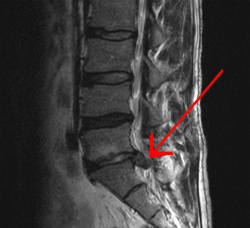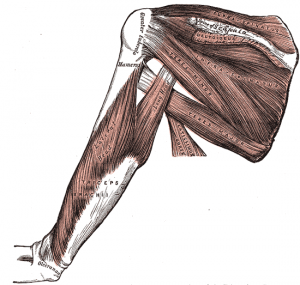No one ever sets out in an athletic endeavor with the goal of getting injured, but ailments are as much a part of sports as sportsmanship itself. Due to the tremendous mass involved, weightlifting injuries can be all too common, especially with amateur lifters in training with Olympic dreams on their minds.
Weightlifting is a tough sport, and part of the mythology of toughness in athletics dictates that performing through injuries equals bravery and grit. But it is of the utmost importance to respond to injuries with care and intelligence. Today I would like to discuss the top three injuries to avoid.
Back Injuries
 The back encompasses a tremendous amount of muscles interconnected across the spine. And this complex network is a honey pot for minor injuries that can quickly snowball into major ailments.
The back encompasses a tremendous amount of muscles interconnected across the spine. And this complex network is a honey pot for minor injuries that can quickly snowball into major ailments.
In the back, pains lead to strains, which in turn lead to sprains, and at that point you will be laid up in bed struggling to move. Herniated disks can also be a debilitating problem to suffer from, and is unfortunately one of the most common weightlifting injuries.
Lifting belts can help to manage some nagging pain or weakness from previously suffered back injuries, but it’s vital to discontinue your workout if you feel acute pain or chronic, nagging pain. A minor injury can easily become a major issue if you try to push through the pain.
Other steps can be taken to avoid and manage slight injuries. First of all, stretch! Before and after. This cannot be stressed enough. Cold, tight muscles are a recipe for injury.
If you have minor pain after your workout, take anti-inflammatory medications and avoid the workout that caused you pain. You can substitute that workout with exercises that aid rehab, such as swimming or even certain types of yoga.
Shoulder Injuries
 As with pitchers in baseball, weightlifters put a similar strain on the delicate tendons of the shoulder. Neither sport involves a movement that any human should naturally be doing, at least not at that intensity. But it’s the strain demands of that body that makes the feats compelling.
As with pitchers in baseball, weightlifters put a similar strain on the delicate tendons of the shoulder. Neither sport involves a movement that any human should naturally be doing, at least not at that intensity. But it’s the strain demands of that body that makes the feats compelling.
The shoulder is a network of joints and tendons, and the tremendous weight involved in weightlifting strains the shoulder near capacity. That’s why shoulder impingement’s and rotator cuff tears can be such common problems in weightlifting.
As always, do not try to lift too much weight, to soon. Maintaining proper form is a must. A qualified coach can help ensure that you are not employing mechanics which might result in an injury.
Also repeat the steps listed above for treating a back injury: stretch, take anti-inflammatory drugs and avoid any pain-causing workouts.
Elbow Injuries
At the 2008 Olympic Games in Beijing, South Korea’s Jaehyouk Sa ended China’s run of eight straight gold medals in the 77 kg weight class. Then, at the 2012 London Games, Sa successfully lifted 158 kg in the snatch.
Subsequently, he attempted to up it to 162 kg, and things went horribly wrong. As Sa exploded from the squat position and tried to lock his arms under the barbell, his right elbow gave out and he dropped the bar behind him, crumpling in place and hollering in pain.
It made for a cringe-worthy spectacle as a proud champion was forced to retire from the event in agony. While this sort of injury is uncommon, it can be devastating for a lifter, due to the lengthy recovery time.
To avoid this, stay within your comfort level in terms of weight, and steer clear of certain exercises which may inflame your elbow, including curls with a heavy straight bar, chin-ups and heavy triceps extensions.
You are unlikely to be attempting anything close to that amount of weight, but the tale of Sa serves as a daunting caveat.
Closing
Approach your lifts with the care and respect it deserves, we are in a sport of extremes. We take on the challenge that few people even think about. Remain healthy by thinking first!
In our next article we look at the Asics Weightlifting Shoes. Thanks for visiting the Olympic Weight Set Review, if you liked this article please use our social buttons to give us the thumbs up.
[hr]
Related Post
[related_posts limit=”3″]
Images courtesy of renjith krishnan / FreeDigitalPhotos.net and wikipedia
